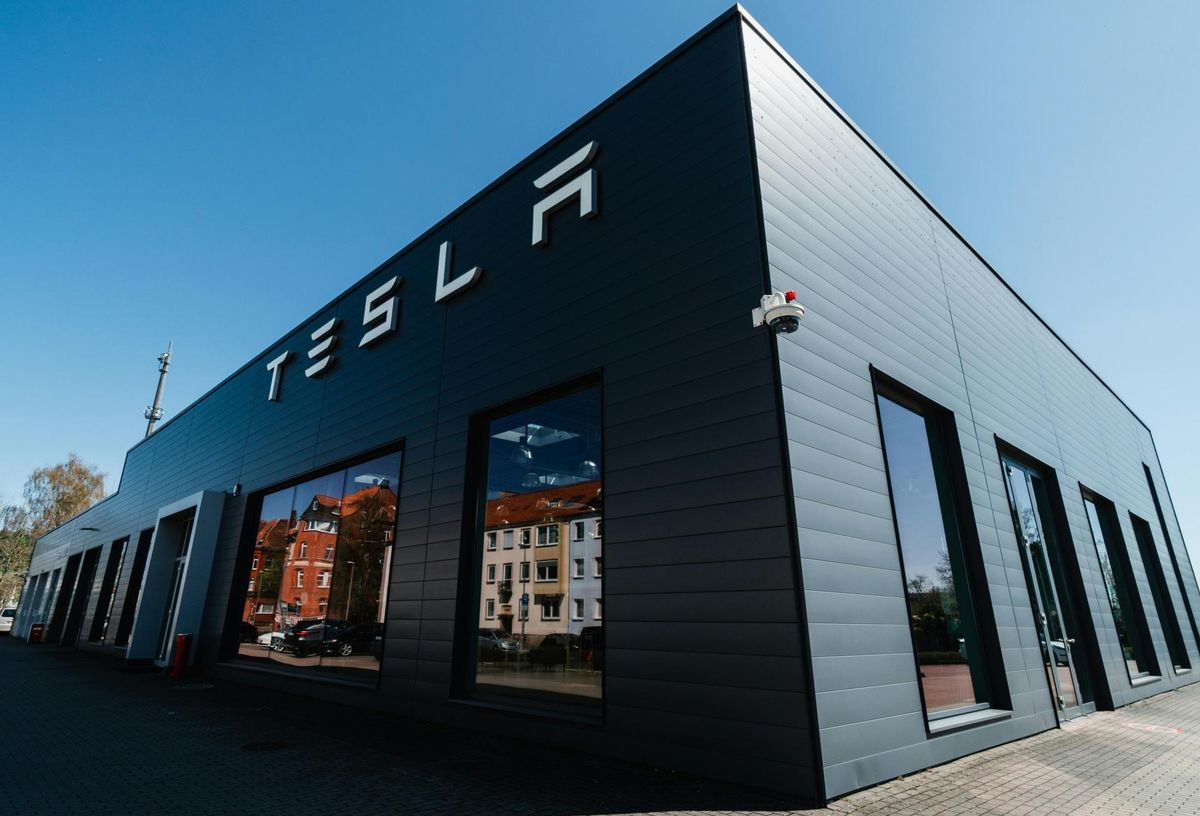Houston was a manufacturing investment powerhouse during the first half of the year.
Consecutive announcements from major players Apple, Nvidia and Tesla boosted morale in the city’s industrial market that was threatened with a supply glut in recent years.
But that pace of major manufacturer announcements won’t continue, industrial brokers say. What’s coming behind them is supporting third-party vendors looking for smaller buildings, augmenting an asset class subsector that was already in high demand.

Occupancy of industrial buildings between 50K SF and 250K SF is on an upward trajectory, pushing up rental rates and drawing developer attention.
Apple is spending $500B on manufacturing investments over the next four years, including building a new facility outside of Houston, it announced in February. Tesla in March announced plans for a 1M SF battery factory in the region, and the next month, Nvidia said it will build a production plant in Houston in partnership with Foxconn.
It would be nearly impossible for more technology giants to continue that pace of announcements, said Drew Coupe, a Houston-based principal at Avison Young focused on industrial tenant representation.
“I don’t know that there are that many big movers of that size,” Coupe said. “Those are monsters.”
But that will allow Houston’s industrial market to cater to the bread and butter of its tenant base as smaller vendors follow to be near the major companies, said Carl Mueller, an industrial real estate broker for Cresa.
Leases from 20K SF to 250K made up 94.2% of all transactions during the first half, according to Avison Young’s second-quarter report. Buildings between 20K SF and 100K SF have the lowest vacancy rate, at 5.6%, compared to 9.7% vacancy in buildings 500K SF or bigger.
The sweet spot is between 75K SF and 100K SF, JLL Texas Research Director Rachel Alexander said. Actual rents have grown 48% in the last three years for buildings in that size range, while all other industrial buildings have seen rent growth from 25% to 35%, she said.

Manufacturing demand remains elevated. About 34% of tenants in the market in May were looking for manufacturing space, an increase from 10% a year prior, Alexander said.
While the brokerage isn’t privy to all of the details of tenants in the market, many seem related to the AI and supercomputing industries.
“Quite a few … look like they’re in support of data centers,” she said. “So not the actual data centers, but the components, the cooling, the racking, those types of materials supporting that element of growth.”
JLL hasn’t yet seen a wave of vendors following major movers, but it would be a natural next step, Alexander said.
The brokers cited Daikin’s building of a 4.2M SF factory in Waller in 2017 that helped transform the once-rural county into a booming industrial and suburban hub as an example of what to expect.
The air conditioning manufacturer, which last year became the namesake of the Houston Astros’ stadium, employs 9,000 people in Waller. That is more than double the city’s population.
“They were out in the middle of nowhere,” Coupe said. “Now they’re surrounded by all their vendors and all their suppliers. It’s going to be very similar here.”
Mueller said he expects to see particular interest in the Northwest Houston submarkets, noting the region is the largest, most mature market for advanced manufacturing in Houston. It is also closest to where companies may need to distribute, Mueller said, citing Tesla’s decision to lease a 1M SF building at Empire West Business Park in Brookshire, near Katy.
Tesla announced plans this year to convert the building into a battery storage manufacturing facility and build another 600K SF building for distribution and manufacturing.
“They originally took that space in Empire West on a short-term deal because it was the closest thing they could really find to Austin,” Mueller said. “Being in Northwest Houston, you’re closer to some of the other tech companies. As it’s extended out further on [Highway] 290 … it’s both the most mature and seen the most growth.”
The Northwest captured the most leasing activity so far this year, with nearly 7M SF leased, almost 4% of its inventory, according to the Avison Young report. The automotive sector claimed more than 24% of leasing activity, led by Tesla.
Although the huge manufacturers caused some spikes, the overall market conditions reflect a return to normalcy, Coupe said. This is demonstrated by the pace of new industrial development, which dropped this year to its lowest first-half total since 2018, the report says.

There is 13.8M SF of industrial product under construction in Houston, which is down from more than 35M SF in 2022 but in line with prepandemic averages.
“It’s healthy normalization,” Coupe said. “We’re not growing too fast. We’re not out over our ski tips to where developers are just overdeveloping and building buildings that will never be absorbed.”
Developers are seemingly taking note of the demand trends.
This week, Lovett Industrial broke ground on the second phase of 610 Business District, an infill business park in South Houston. Phase 2 will consist of six new buildings totaling 537K SF, catering to smaller users that want to be close to Port Houston and a qualified labor pool, a press release says.
Also this week, Stream Realty Partners announced the acquisition of a 17-acre site in Northwest Houston where it will build a 300K SF warehouse to accommodate tenants with needs ranging from 75K SF to the full building.
This is a change from the early years of the pandemic, when an e-commerce boom led to significant development of industrial buildings around 1M SF. That space has largely been absorbed now, Coupe said.
Absorption in Q2 dropped to one of the lowest quarterly levels since the second quarter of 2020, the Avison Young report says, adding that the 3.4M SF absorbed in the first half of 2025 is consistent with the prepandemic average of 3.7M SF.
“Folks are starting to break ground on historical, normal size ranges,” Coupe said. “Our vacancy rates are sub-6% in that size range. So we can easily take more space.”
While inconsistent tariff policies may be delaying decisions, Houston continues to retain a core tenant base of local companies, he said. As time passes, more certainty may allow smaller vendors and suppliers to set up shop in Houston.
“Houston, from a growth perspective, is not going anywhere,” Coupe said. “Our population is continuing to grow. Our land is still affordable. We still have lots of land, and we have no zoning. So from that perspective, we will be the target for a lot of those groups when they’re able to make those decisions.”
Houston continues punching above its weight class from an industrial perspective, Alexander said. The city ranked fourth nationally for occupancy gains in the first half of 2025, though it is the ninth-largest market.
This is a testament to population growth, resiliency of Port Houston and the flow of commerce through the Texas Triangle, she said.
“Those aren’t things that we just say,” Alexander said. “They actually matter for all of these diverse industries that power industrial.”
